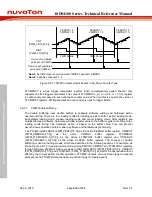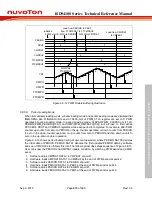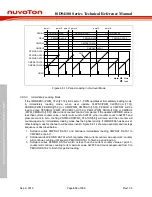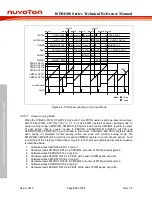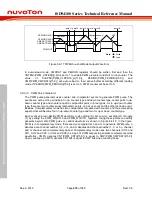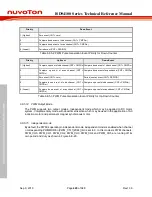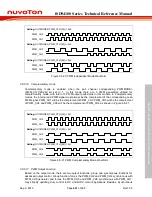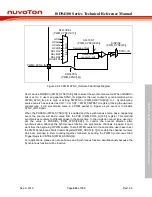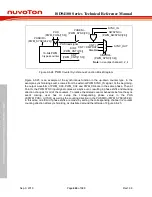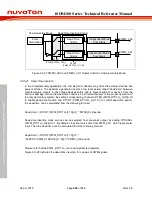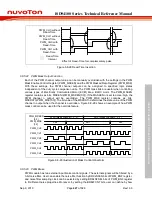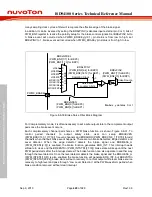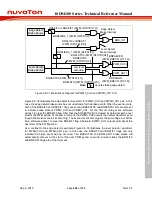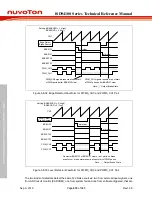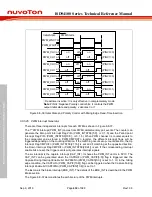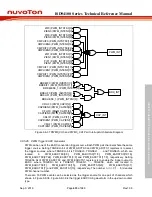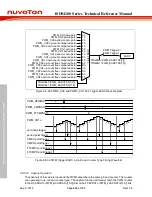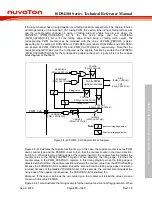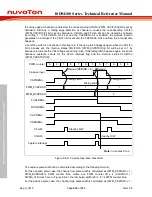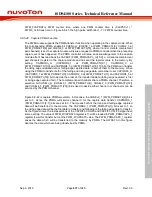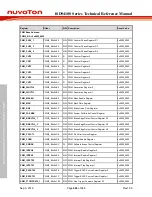
ISD94100 Series Technical Reference Manual
Sep 9, 2019
Page
426
of 928
Rev1.09
IS
D
9
410
0
S
ER
IE
S
T
E
C
HN
ICA
L
RE
F
E
RE
NCE
M
AN
U
AL
Dead Time
12-bits
Dead Time
12-bits
DTEN
(PWM_DTCTL0_1[16])
Independent Mode
Four Steps
Independent Mode
Four Steps
DTCNT
(PWM_DTCTL0_1[11:0])
Pulse
Generation
Complementary Mode
PWM0_CH0
PWM0_CH1
Dead Time Insertion Control
Figure 6.8-27 PWM0_CH0 and PWM0_CH1 Output Control in Complementary Mode
6.8.5.21 Dead-Time Insertion
In the complementary application, the complement channels may drive the external devices like
power switches. The dead-time generator inserts a low level period called “dead-time” between
complementary outputs to drive these devices safely and to prevent system or devices from the
burn-out damage. Hence the dead-time control is a crucial mechanism to the proper operation of
the complementary system. By setting corresponding channel n DTEN (PWM_DTCTLn_m[16]) bit
to enable dead-time function and DTCNT (PWM_DTCTLn_m[11:0]) to control dead-time period,
the dead-time can be calculated from the following formula:
Dead-time = (DTCNT (PWM_DTCTLn[11:0])+1) * PWM0_CLK period
Dead-time insertion clock source can be selected from prescaler output by setting DTCKSEL
(PWM_DTCTLn_m[24]) to 1. By default, clock source is come from PWM_CLK, which is prescaler
input. Then the dead-time can be calculated from the following formula:
Dead-time = (DTCNT (PWM_DTCTLn[11:0])+1) *
(CLKPSC (PWM_CLKPSCn [11:0])+1)*PWM0_CLK period
Please note that the PWM_DTCTLn_m are write-protected registers.
Figure 6.8-28 indicates the dead-time insertion for one pair of PWM signals.

